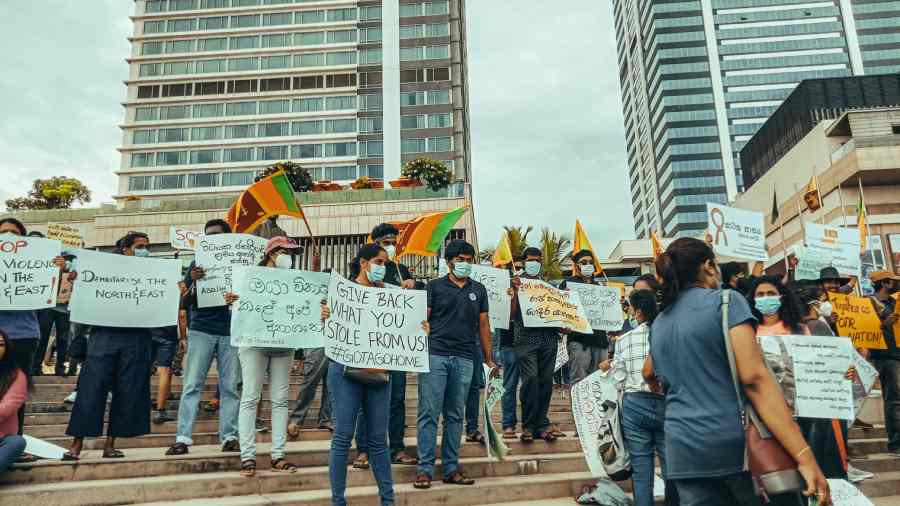In June, a few dozen activists started meeting regularly at a seaside tented camp in Colombo for hours-long sessions to think up ways to revive Sri Lanka’s flagging protest movement.
The group, which included a Catholic priest, a digital strategist, and a popular playwright, succeeded beyond their wildest hopes.
Within weeks, hundreds of thousands of people descended on Colombo. After initially clashing with police, protesters occupied key government buildings and residences, forcing President Gotabaya Rajapaksa and his Prime Minister to promise to step down.
Within weeks, hundreds of thousands of people descended on Colombo. After initially clashing with police, protesters occupied key government buildings and residences, forcing President Gotabaya Rajapaksa and his Prime Minister to promise to step down.
“I’m still trying to process it,” said Chameera Dedduwage, a digital strategist at a major advertising firm who became part of the team that helped organise the uprising.
“It was 50 per cent premeditation and coordination, another 30 per cent willingness of the people, and 20 per cent luck.”
In interviews, veterans of those small meetings described how they agreed on a multi-pronged campaign to inject new life into the movement widely known as “Aragalaya”, or “struggle” in Sinhala.
The movement had begun in March when thousands took to the streets to vent their anger at lengthy power cuts and spiralling prices and to call for the Rajapaksa family that had dominated the country’s politics for much of the last 20 years to leave power.
On May 9, Rajapaksa’s elder brother Mahinda — President from 2005-2015 and at that time serving as Prime Minister — had stepped down. On June 9, younger brother Basil quit as a lawmaker.
So, the Aragalaya activists targeted July 9 as the day they hoped to unseat the President himself.
A plan emerged to combine online agitation, meetings with political parties, labour unions, and student groups, and door-to-door campaigning to get enough people back on the streets for a final push, according to the three attendees.
Public frustration at ongoing shortages, which has brought the economy to a standstill, and the President’s stubborn refusal to step aside, had been simmering for weeks.
Riding on trains, buses, lorries, and bicycles, or simply walking, huge crowds converged on Colombo on Saturday, outnumbering security forces deployed to protect government buildings and upending Sri Lankan politics.
“Gota Go Home!” the crowds chanted in Colombo’s Fort area, seething over the country’s worst economic crisis since independence.
They quickly broke into the President’s colonial-era house, before storming a portion of the presidential office and entering the Prime Minister’s official residence 2.5 km away. Rajapaksa and Prime Minister Ranil Wickremesinghe had been moved to undisclosed safe locations, and within hours they separately announced they would resign to allow an all-party interim government to take over.
“I think it is the most unprecedented gathering in this country. Full stop,” Ruwanthie de Chickera, a playwright who is part of the core group of Aragalaya activists, told Reuters. Representatives of the President and Prime Minister did not immediately respond to requests for comment on the protests and why they stepped aside. Their whereabouts have not been made public.
Jeevanth Peiris, a Catholic priest who is part of the activist group, worried that only a few thousand people would turn up the next day because of the restrictions. Fuel shortages had curtailed transport options for weeks. “We honestly expected only 10,000 with all these restrictions, all this intimidation,” he told Reuters, dressed in a white cassock. “We thought 5,000 to 10,000.”










